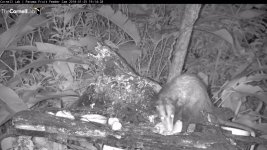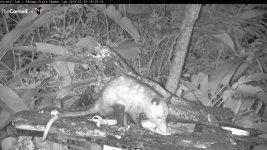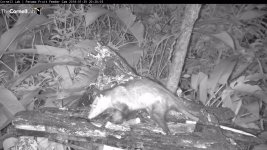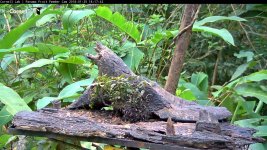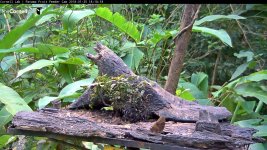RafaelMatias
Unknown member

Thanks for the ID on the Dusky-faced Tanager. Saw it as well but couldnt find it yet.
So Summarizing this forum has seen and IDed (live):
Grey-headed Chachalacas
Red-Crowned Woodpecker
Rufous Motmot
Clay-coloured Thrushes
Buff-throated Saltator
Palm Tanager
Crimson-backed Tanager
Lemon-rumped Tanager
Blue-grey Tanager
Dusky-faced Tanager
Yellow-throated Euphonia
Hope I didnt miss anything.
I haven't seen the motmot personally, mentioned it as a species that had occurred before I posted the link. According to the Cornell website, the Euphonias are most likely Thick-billed. 10 species at a webcam in 24 hours, not too bad!
At night there were a few hawkmoths feeding on the flowers on the background; there was a butterfly (with large white spots) darting by over the fruit today, just a while ago. And there's a squirrel showing up from time to time (any idea about the ID?).






